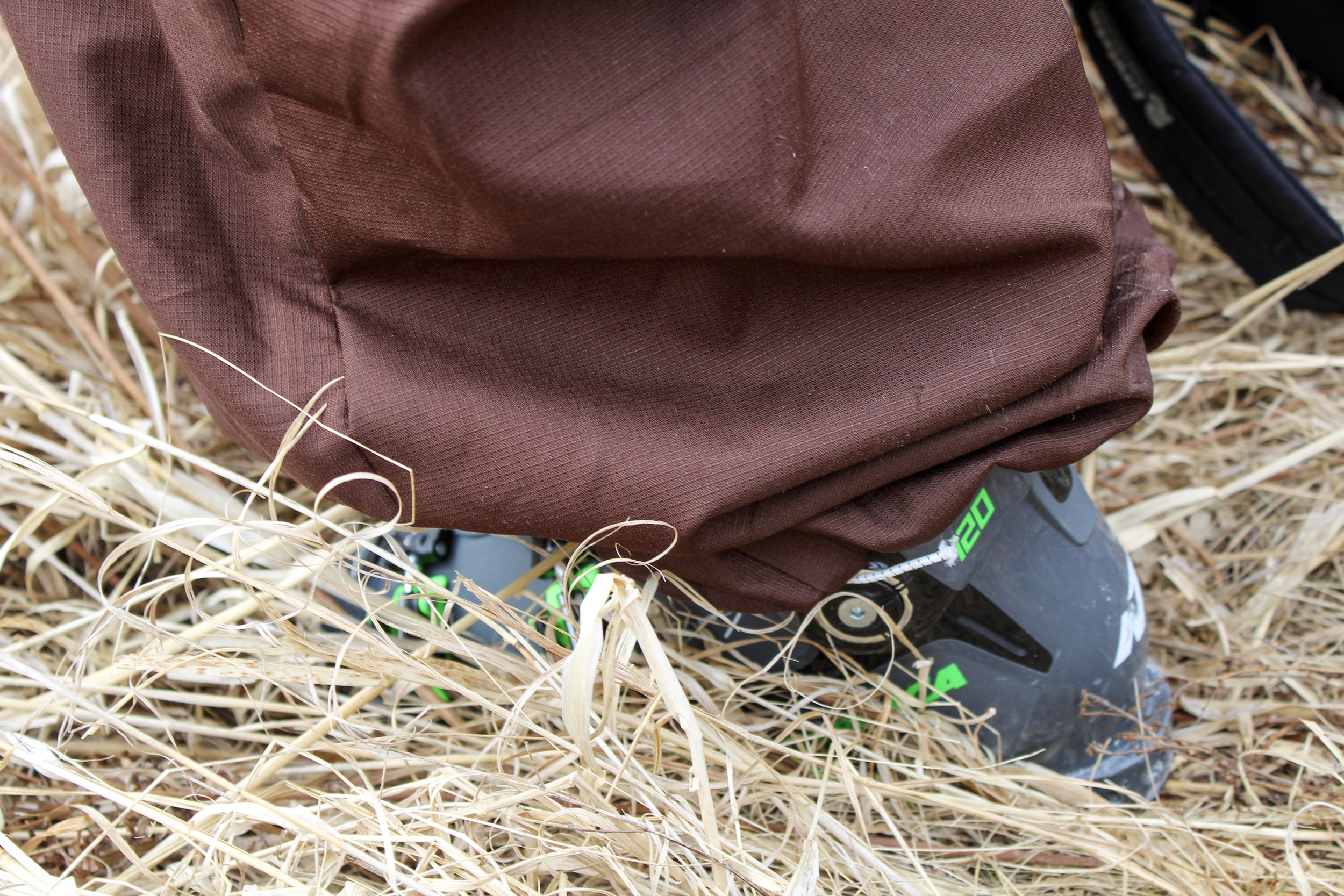Self-Made Apparel
By Nicole Lara ‘25 and Lukka Wolff ‘25.5
Sustainability is a growing priority on campus, and as fast fashion dominates the industry, some students are opting for a more personal and eco-friendly approach—making their own clothing.
Dermot’s DIY Ski Pants
For Dermot McMillan ‘25, making his own ski pants was about more than just functionality; it was a creative challenge and a way to embrace sustainability. Inspired by his high school friend, Quinn, who also made his own gear, Dermot decided to take matters into his own hands. With a sewing machine and a vision, he set out to create pants that would not only withstand the slopes but also reflect his personal style.
The process, however, was not that easy. “When you are making pants, it is kind of hard to make them work unless they are super baggy,” Dermot explained. To achieve the right fit, he found that cinched bottoms helped shape the pants more effectively. For these particular pants, he used some type of waterproof canvas. The bagginess also created an unexpected but welcome effect; when skiing, the pants fill with air, adding insulation and giving them a unique, almost weightless feel.
Some traditional skiers argue that self-made ski pants are non-functional, but Dermot sees value in the DIY approach. “Why would you drop $700 on a jacket?” he asks, highlighting the tension between function and cost in ski fashion. A lifelong skier, he also appreciates the humor in unconventional ski wear. “I think it’s kind of funny to wear jeans on the slopes and look like a gapper,” he says, referring to the term for skiers who appear inexperienced or out of place.
Beyond functionality, Dermot draws inspiration from early 2000s ski fashion, an era known for its oversized, statement-making gear. He also sees a connection between ski fashion and streetwear, noting that many people embrace the aesthetics of skiing even if they don’t hit the slopes themselves. Whether through thrifting or making his own pants, Dermot enjoys wearing pieces that feel personal and stand apart from mass-produced options. His DIY approach not only allows for customization but also promotes a more sustainable, hands-on relationship with fashion.
Mackenzie’s DIY Approach
For Mackenzie Smith ‘25, making her own clothes is more than just a practical skill; it’s an art form. Her journey with sewing began when she was just seven years old when she took knitting lessons with her mom. By the time she turned ten, she had her very own sewing machine. Initially, she wasn’t focused on making clothing, she simply loved creating things. But over time, her approach evolved. Whenever she saw a piece of clothing that was too expensive or out of stock, she thought, “I can totally make this.” If something wasn’t accessible, she would craft her own version.
Mackenzie’s design process is intuitive and fluid. She often starts with an image that sparks her interest, sketching her version with added flair. The fabric plays a crucial role in shaping the final piece; she adjusts her design based on its texture and movement. Using her own measurements, she continuously tries on the garment throughout the process to ensure the perfect fit. She describes her style preferences as a balance: “I like an oversized pant and I like a top that is a little more fitted but not necessarily tight.” Rather than following fast fashion trends to the letter, Mackenzie adds a personal twist to every piece. She embraces creativity over conformity, allowing her designs to reflect her personality.
Mackenzie encourages beginners to learn by observing how existing clothes are constructed. She suggests: 1) Study store-bought patterns to understand garment structure. 2) Watch YouTube tutorials to grasp sewing basics. 3) Most importantly, have fun and stay patient. “I have more things that I have not finished than I have finished,” she admits, emphasizing that mistakes are part of the learning process. If something doesn’t turn out right the first time, she believes in trying again because every piece is a step forward in the learning journey of making fashion your own.
Takeaway: While fast fashion isn’t entirely avoidable, creating your own clothing offers a sustainable and personalized alternative. By repurposing materials and tailoring designs to fit our needs, we can reduce waste, save money, and express creativity while embracing a more conscious approach to fashion.




